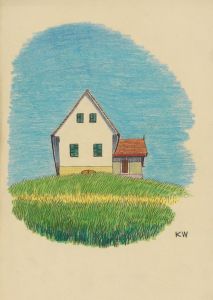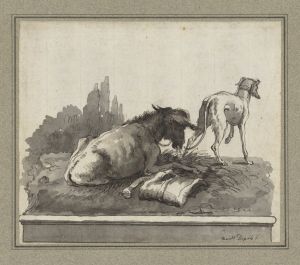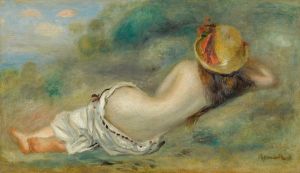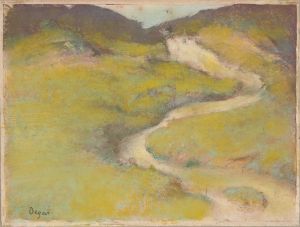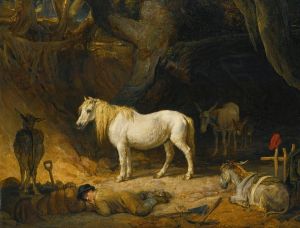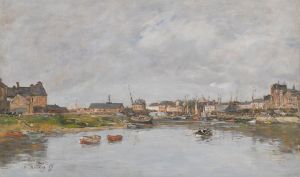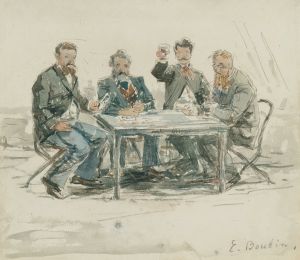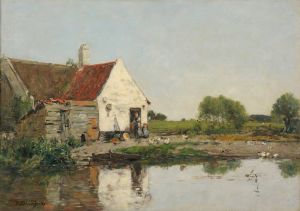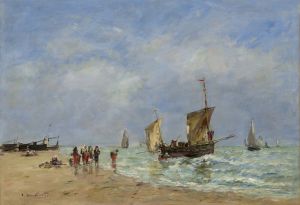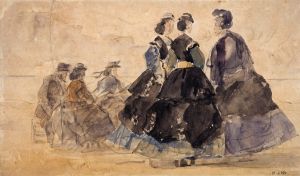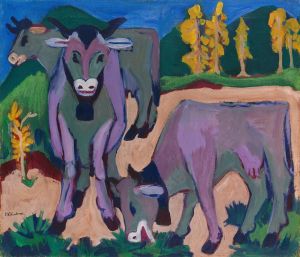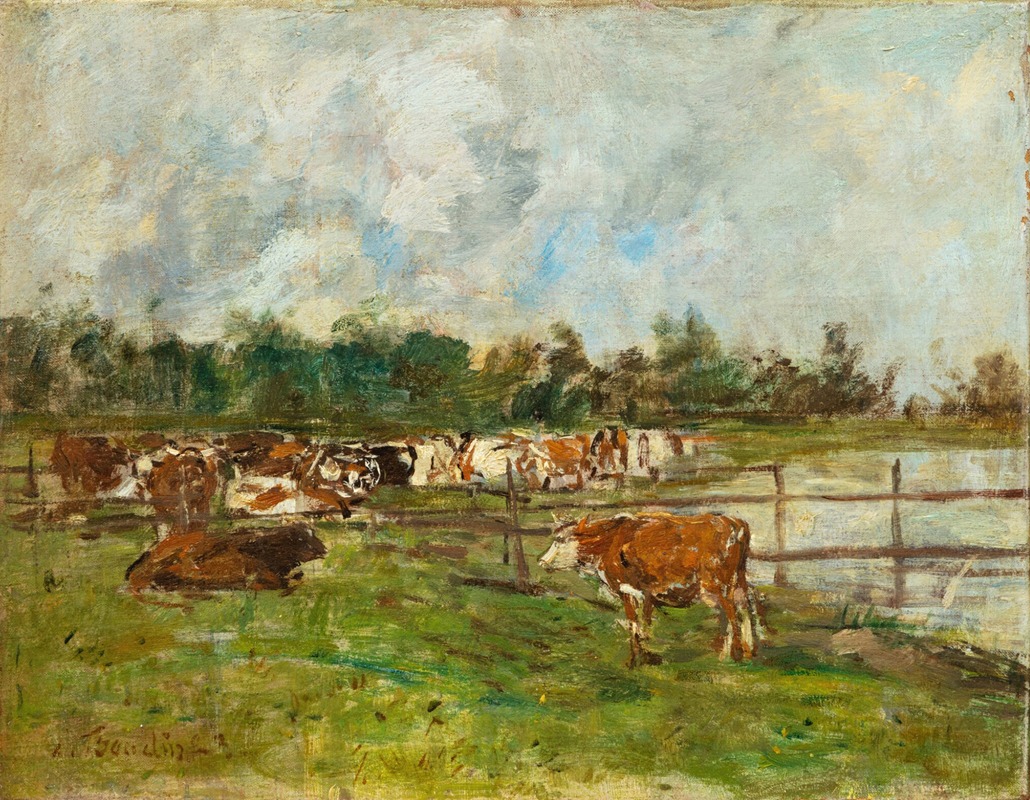
Vaches au pré
A hand-painted replica of Eugène Boudin’s masterpiece Vaches au pré, meticulously crafted by professional artists to capture the true essence of the original. Each piece is created with museum-quality canvas and rare mineral pigments, carefully painted by experienced artists with delicate brushstrokes and rich, layered colors to perfectly recreate the texture of the original artwork. Unlike machine-printed reproductions, this hand-painted version brings the painting to life, infused with the artist’s emotions and skill in every stroke. Whether for personal collection or home decoration, it instantly elevates the artistic atmosphere of any space.
Eugène Boudin's painting Vaches au pré (translated as Cows in the Meadow) is a work by the French artist known for his pioneering contributions to landscape painting and his influence on the Impressionist movement. Boudin, born in 1824 in Honfleur, Normandy, was one of the first French painters to paint outdoors, or "en plein air," capturing the natural light and atmosphere of rural and coastal scenes.
Vaches au pré depicts a tranquil rural landscape featuring cows grazing in a meadow. The painting reflects Boudin's characteristic style, which often focused on the harmonious interplay between light, land, and sky. His works frequently celebrated the simplicity and beauty of the natural world, and this piece is no exception. The composition emphasizes the pastoral charm of the French countryside, a recurring theme in Boudin's oeuvre.
Boudin's technique in Vaches au pré demonstrates his mastery of light and color. He employed loose, fluid brushstrokes to convey the textures of grass, the forms of the cows, and the expansive sky above. This approach to painting, which prioritized capturing the fleeting effects of light and atmosphere, would later influence the Impressionists, including Claude Monet, who regarded Boudin as a mentor.
The exact date of creation for Vaches au pré is not definitively documented, but it is consistent with Boudin's broader body of work, which spans the mid-to-late 19th century. During this period, Boudin frequently painted scenes of rural life, coastal landscapes, and seascapes, often in his native Normandy.
Today, Eugène Boudin is celebrated as a precursor to Impressionism, and his works are held in high regard for their innovative approach to landscape painting. While specific details about the provenance or current location of Vaches au pré are not readily available, many of Boudin's paintings are housed in prominent museums, including the Musée d'Orsay in Paris and the National Gallery of Art in Washington, D.C.
Boudin's dedication to capturing the beauty of nature and his influence on subsequent generations of artists ensure his enduring legacy in the history of art. Vaches au pré serves as a testament to his skill and vision as a painter of the natural world.





